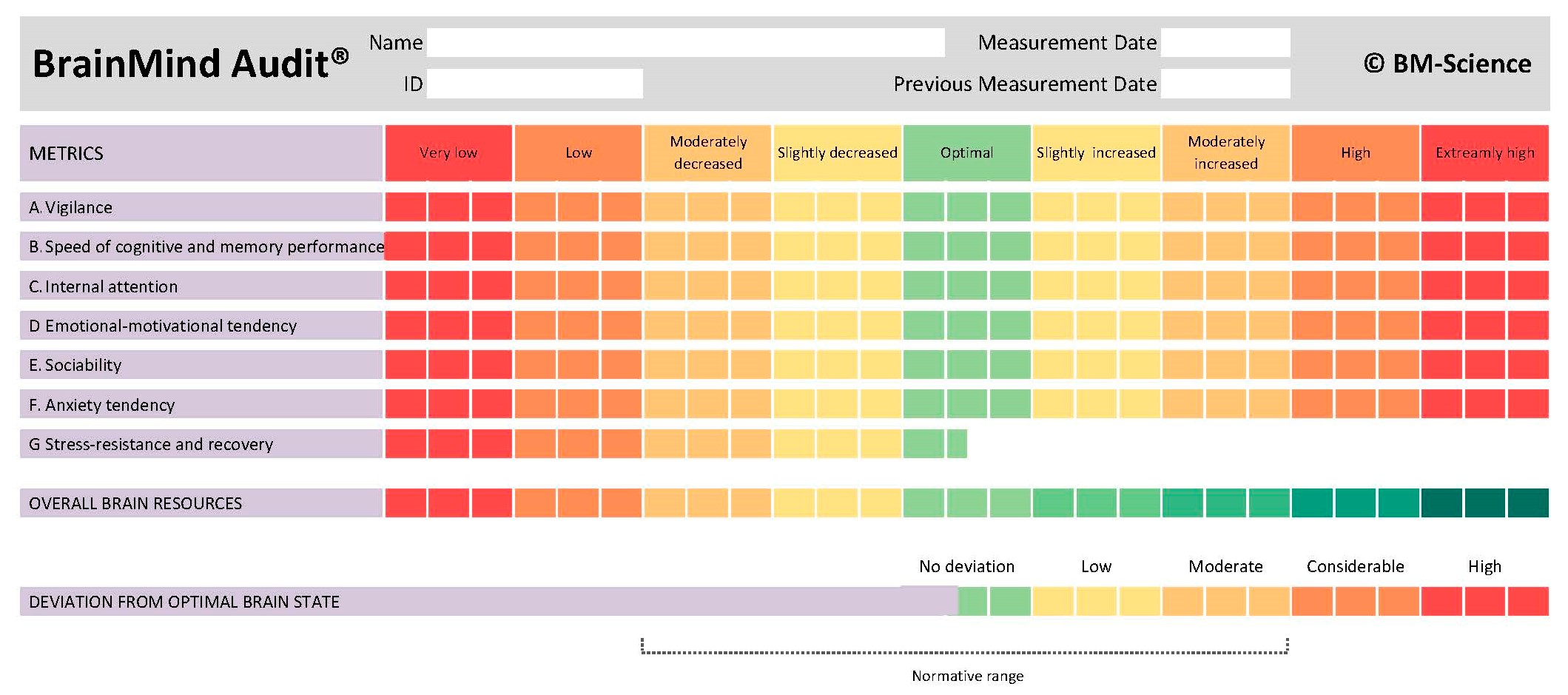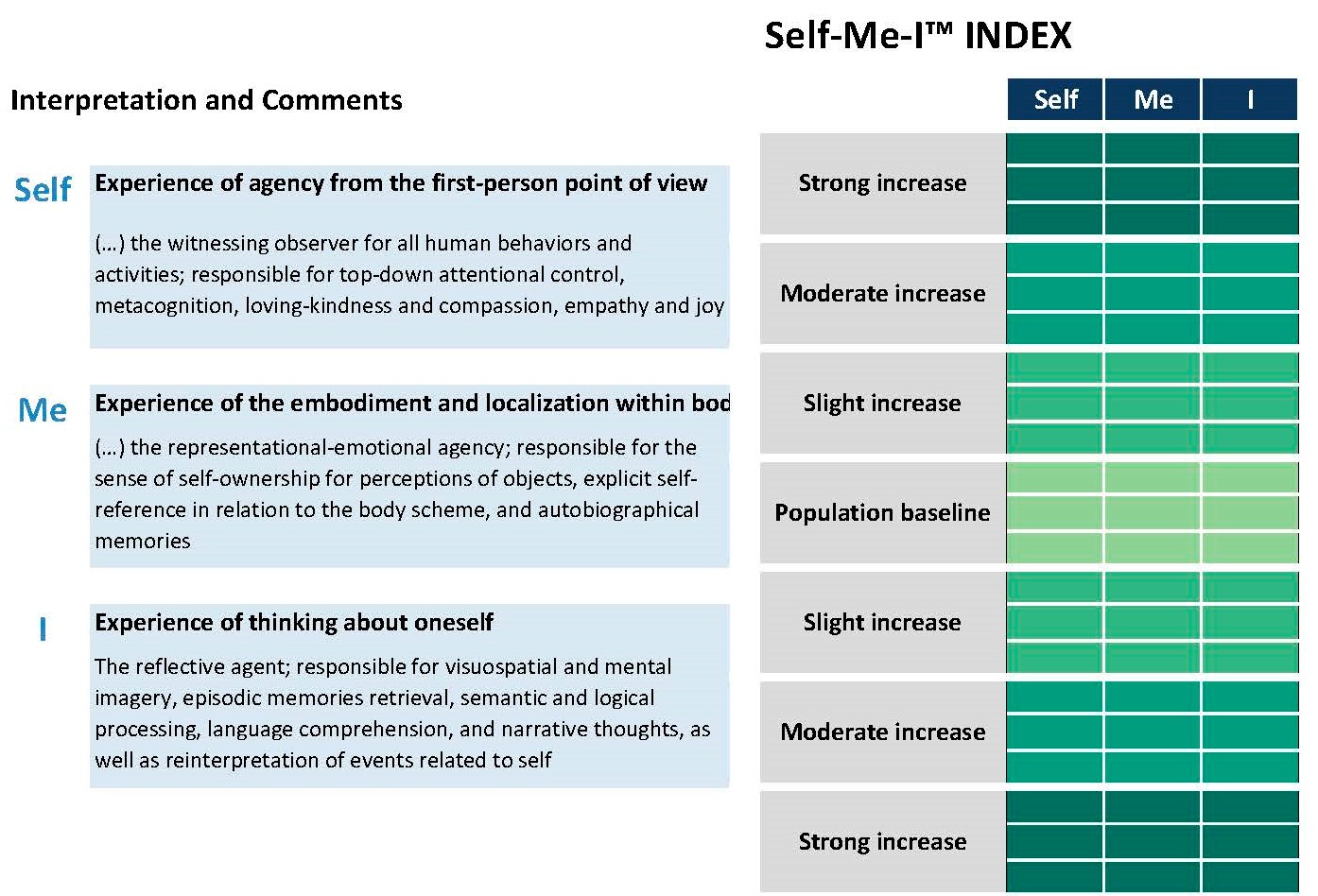EEG-based monitoring
BrainMind Audit®
BrainMind Audit® is a qEEG-based tool that provides a screening of person’s core brain and mind strengths and weaknesses, including cognitive abilities, emotional regulation, and environmental preferences, stress resistance, and risks factors for brain and mind dysfunction.
BrainMind Audit® Profile reflects the unique way the individual combines and processes information across the 5 important brain-&-mind domains of functioning: Cognition/Executive Functions, Emotional-Motivation Tendency, Social Behaviour Tendency, Resilience, and Overall Brain-&-Mind Resources.
BrainMind Audit® Profile contains 9 metrics that are:
• VIGILANCE metric → predominant baseline "POWER SUPPLY" level
• SPEED OF COGNITIVE AND MEMORY PERFORMANCE metric → SPEED OF THE BRAIN’s “ENGINE”
• INTERNAL ATTENTION metric → SELF-FOCUS (vs. external focus)
• EMOTIONAL-MOTIVATIONAL TENDENCY metric → predominant AFFECT & FIGHT-or-FLIGHT responses
• SOCIABILITY metric → SENSORY STIMULATION & EXCITEMENT TOLERABILITY
• ANXIETY TENDENCY metric → tendency of “BEING ON GUARD” across a variety of situations
• STRESS-RESISTANCE AND RECOVERY metric → ADAPTABILITY & RESILENCE
• OVERALL BRAIN RESOURCES metric → “BIOCAPITAL”
• DEVIATION FROM OPTIMAL BRAIN STATE metric → LIKELIHOOD OF NEURO-DYSFUNCTION

For more information see here.
Self-Me-I™ index
Self-Me-I index™ is a qEEG-based tool that evaluates three aspects/features of the subjective sense of Selfhood:
a) witnessing agency (“Self”),
b) body representational-emotional agency (“Me”), and
c) reflective/narrative agency (“I”).
A causal relationship has been established between these three phenomenological aspects/features of experiential Selfhood and the functional state of three sub-nets of the brain’s self-referential network (SRN).

For more information see here.
The employment of qEEG-screening profiling
BrainMind Audit® and Self-Me-I index™ allows individuals, coaches/trainers and clinicians to assess deep dynamic neurophysiological mechanisms that underlie baseline traits and features essential for effective, flexible and optimal well-being, as well as future risks, and track their development over time. It also makes it possible to tailor coaching and training to each person's unique mental and cognitive need. In particular, this approach permits:
• Understand better the status of baseline (trait) characteristics of the individual’s brain and mind functioning relevant for performance and behaviour.
• Adjust the coaching/training to the individual’s brain and mind functioning.
• Establish the individual’s own control state in measuring the efficacy of personalized coaching/training and outcomes.
• Obtain objective "before and after" evaluations of long-term training.
As for today (01. 2024) 17 scientific theoretical and experimental studies have been carried out and over 800 people have had their qEEG-screening profiles completed, with a high degree of satisfaction expressed:
Customer satisfaction





